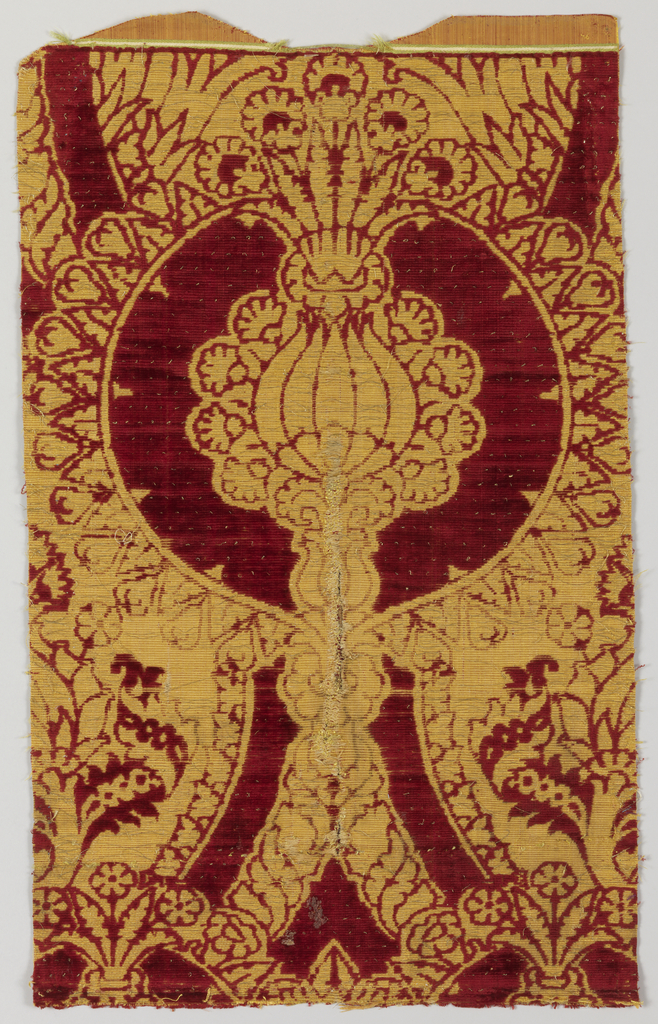This velvet exemplifies the prodigious skill of Italian velvet weavers in the latter half of the 15th century. The red silk pile is embellished with sparkling allucciolato, or metallic weft loops. The voided areas have no pile, but shine with supplementary wefts of silk wrapped in silver-colored metal. Italian velvet weavers developed a special technique to maximize the impact of costly metallic threads by keeping them on the visible surface, rather than hidden on the reverse. Here, thick yellow wefts create a foundation weave through which supplementary wefts of metallic wrapped threads are woven, catching only every fourth warp. This allows for a more delicate treatment of the velvet pile, forming the fine outlines of leaves and flowers.
The predominant textile motif of the Italian Renaissance was the pomegranate, introduced into the design lexicon through trade with the Ottoman Empire. Closely associated with the noble families and their courts, the pomegranate symbolized eternity, fertility, and resurrection.
